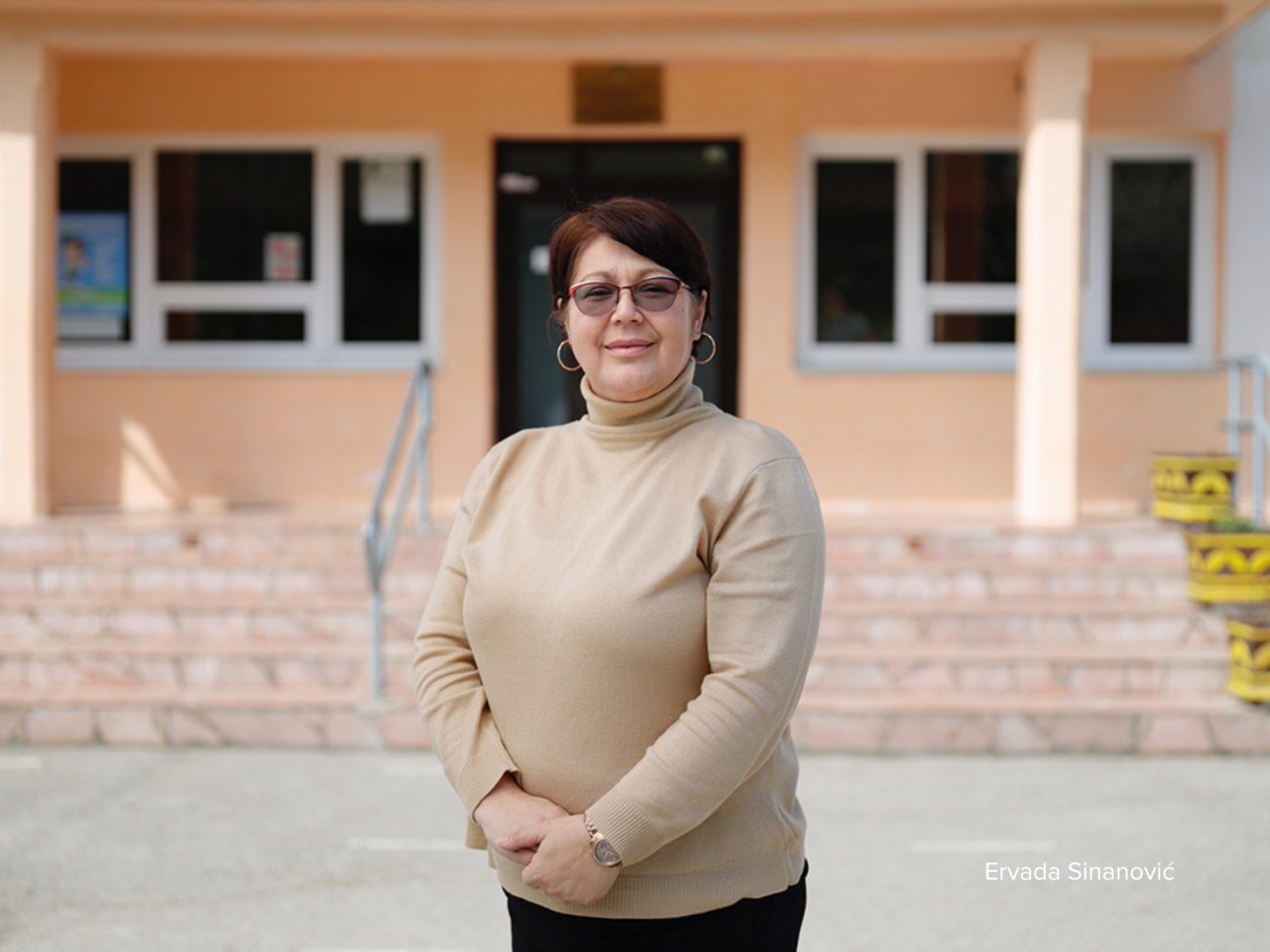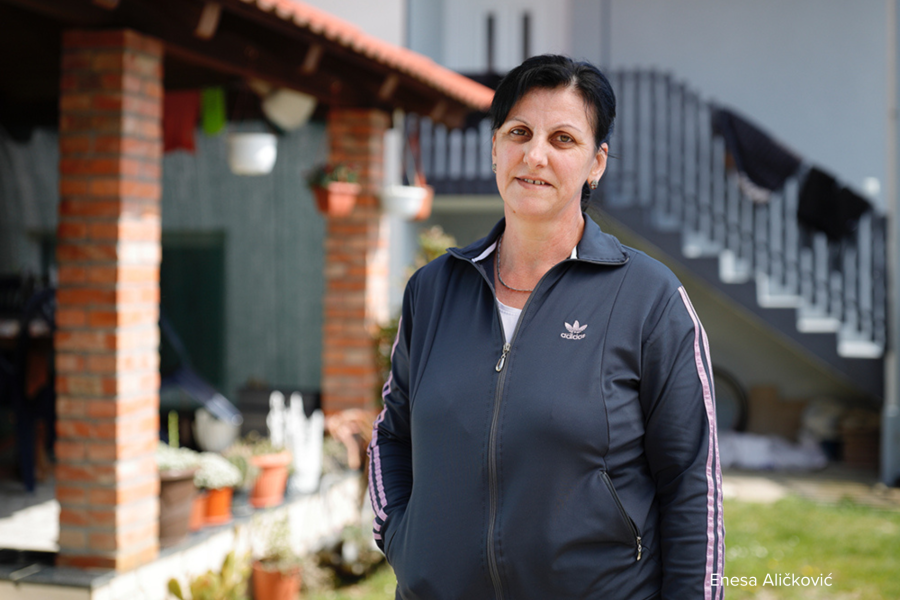Making Gradačac Safer Through Joint Efforts

Gradačac is one of 91 local communities in Bosnia and Herzegovina facing significant flood and landslide risks.
The City of Gradačac knows that sustainable development of the community is not possible until a safe environment for the lives of the inhabitants is developed by improving the work of local services in the areas of civil protection, health, education and agriculture, with the aim of reducing the disaster risks (DRR).
The settlement of Aličkovići in the local community of Mionica in Gradačac is one step away from a long-term solution to the landslide problem that this community has been struggling with for a decade. Ms Enesa Aličković, a resident of the settlement, recalls that the landslide was activated in 2014 when her family's house was among the most threatened in the whole settlement. “The active landslide was only five meters from our house. Then, with the support of the Civil Protection of Gradačac, we managed to temporarily rehabilitate the landslide, but we were still at risk”, said Ms Aličković.
Rainy days brought new problems for the residents of Aličković. The landslide would reactivate, threatening to destroy their houses and driveways. Ms Enesa Aličković's family house was temporarily repaired several times over the past years, but the nearby landslide still posed a threat.

“It was not before the rehabilitation done through this project that we got a permanent solution and managed to keep a roof over our heads, for which we are very grateful. Fortunately, our house is now protected because land drains were laid on the surrounding land, a dry well was built, and stones were placed to prevent a landslide from spreading”, Ms Aličković said.
Houses, roads and orchards that were exposed to the landslide in the Aličkovići settlement have been permanently protected by rehabilitation, which will reduce the City of Gradačac's constant investments in temporary rehabilitation of landslides carried out in the past years.
Landslide rehabilitation in Mionica local community is just one in a series of activities that were carried out in Gradačac through the implementation of the Joint Programme activities and the work of the Local DRR Platform composed of experts from various fields - civil protection, health, education and agriculture. Through regular working meetings and participation in numerous training sessions and workshops within the DRR Programme, they found the best solutions for improving the protection and safety of citizens.
A member of the Local DRR Platform in the field of education, Ms Ervada Sinanović, who is the principal of the “Musa Ćazim Ćatić” Elementary School, says that the DRR Programme has raised the awareness of teaching staff in Gradačac about their role in disaster prevention. Four elementary schools in this local community were involved in the project, and they all completed the risk and vulnerability assessments and developed disaster preparedness and response action plans.
“A total of eight workshops involving teachers and students were held, and I would like to single out the evacuation drill in which they were joined by representatives of the Civil Protection, the police and the emergency service of the Gradačac Health Center," said Ms Sinanović.
The schools in Gradačac also received significant funds to finance the rehabilitation of school buildings, the installation of disabled access ramps, and the purchase of CO2 fire extinguishers and switch boxes with automatic circuit breakers.
Ms Sinanović adds that a pilot project of analysis and assessment of security risks and the general condition of the school facilities was implemented as part of the DRR Programme through the VISUS methodology, which refers to visual analysis for the purpose of defining the improvement of security strategies.
“This methodology enables the evaluation of school buildings by assessing multiple hazards using a special application developed at the University of Udine in Italy, and this activity was carried out in Gradačac by professors and students of the Faculty of Architecture in Sarajevo and the Faculty of Architecture and Civil Engineering in Banja Luka”, Ms Sinanović explained.
The safety of the most vulnerable residents has also been significantly improved through a series of training sessions attended by the employees of the Gradačac Center for Social Welfare so that they are prepared to respond adequately by applying new protection and rescue skills and thereby prevent disasters.
The Center also conducted a risk and vulnerability assessment of the vulnerable groups of the population, on the basis of which protection strategies and operating procedures for work and protection in emergencies were developed. As part of the DRR Programme, the Center received funds to purchase emergency equipment packages and computers for digitizing archival materials and created the Center's first website ever.
“In addition to all the duties and difficulties caused by the complexity of the work and services provided by the Social Welfare Center, its employees actively participated in the numerous workshops, training sessions and seminars both during and after the crisis caused by the Covid-19 pandemic. We are very proud of what they did”, Ms Sinanović said.
In the end, she emphasized that all the citizens of Gradačac who participated in whatever way in the DRR Programme contributed to creating a safer environment and better living conditions in their local community.
The Municipality of Gradačac is one of the ten partner local communities of the Joint Swiss-UN Programme “Disaster Risk Reduction for Sustainable Development in BiH”. The main goal of the Programme is to support local governments in BiH in improving their institutional capacities for disaster risk reduction, frameworks, public services and partnerships. The Programme supports citizens, especially the most vulnerable groups, and the high-risk local communities in BiH in order to prepare for and adapt to the disaster risks, as well as to ensure that the population in the areas exposed to risks is less vulnerable to the social and economic consequences of disasters and climate change.









